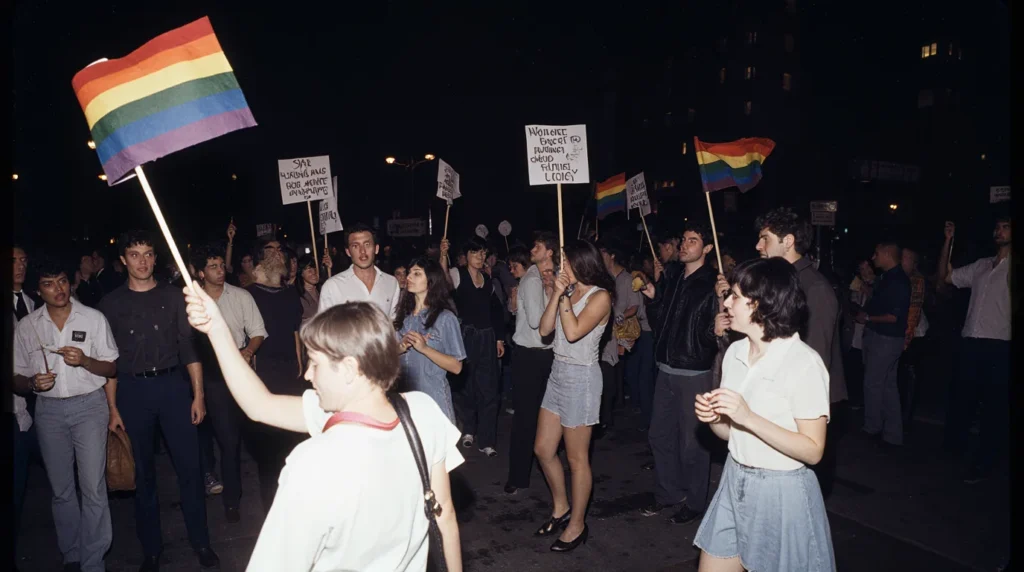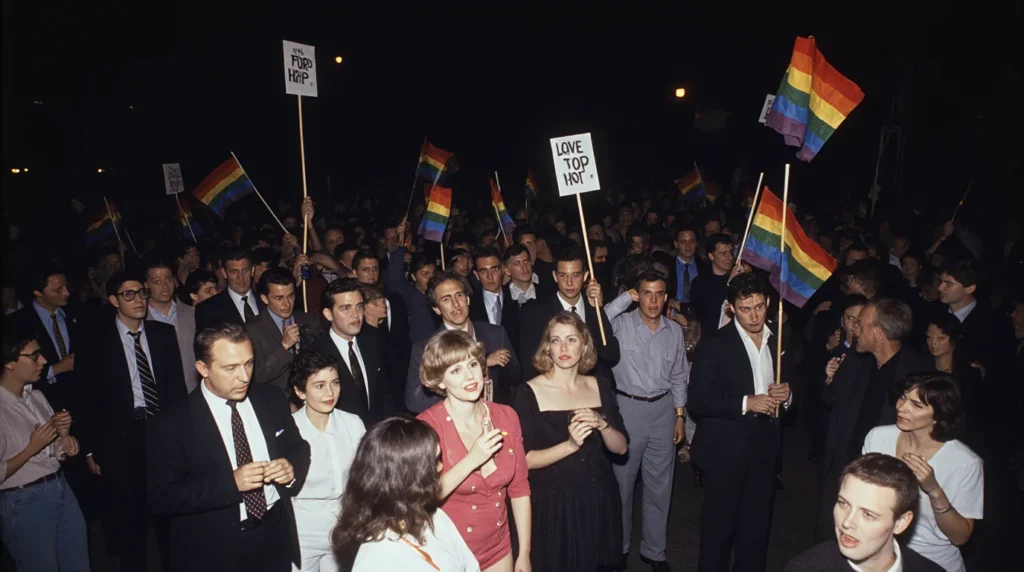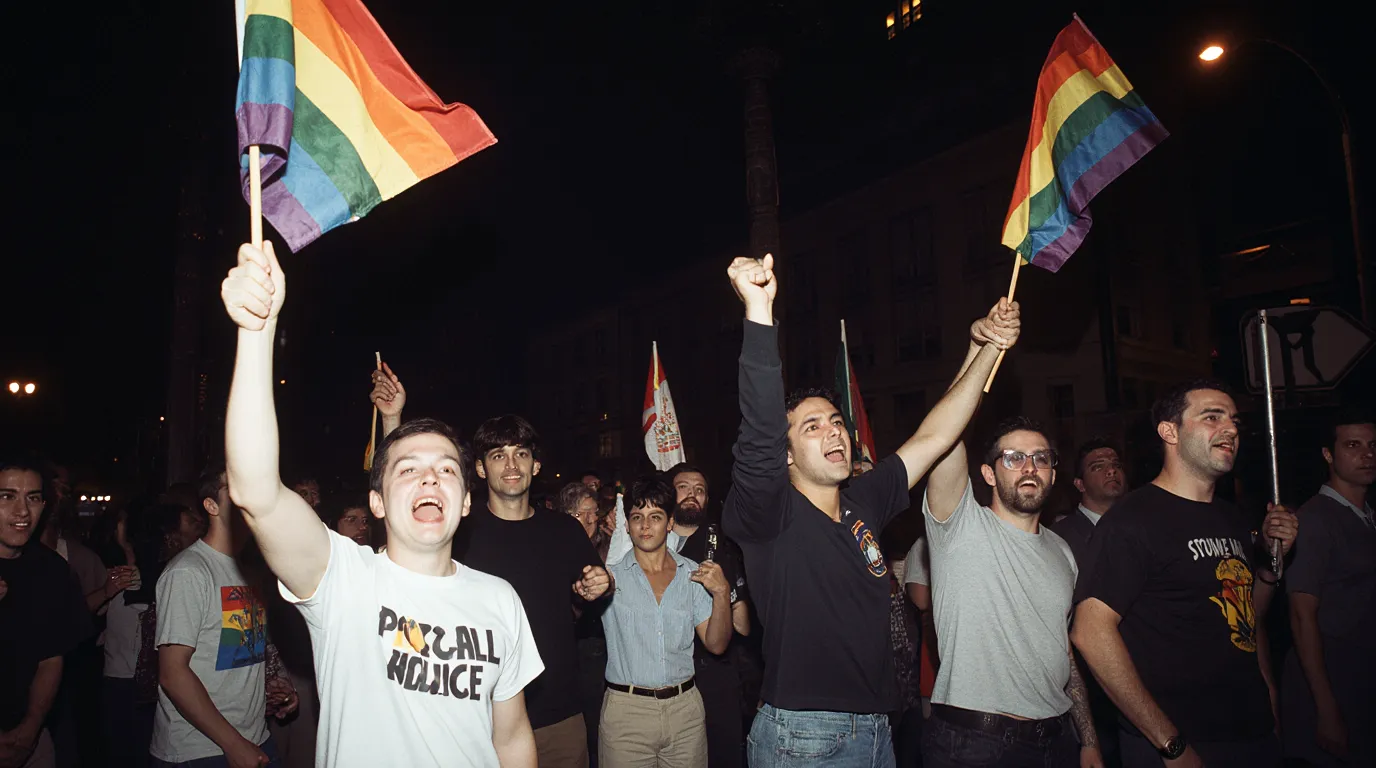The Stonewall Riots are remembered as a turning point in American history and the catalyst for the modern LGBTQ+ rights movement. What started as a police raid at the Stonewall Inn, a small gay bar in New York City, turned into days of resistance that transformed silence into a nationwide demand for equality. In June 1969, a community that had long been forced into the shadows finally stood up—and changed the course of history.
Table of Contents
Life Before Stonewall
To understand why the Stonewall Riots mattered, we must look at life for LGBTQ+ people in the United States before 1969. Same-sex relationships were criminalized in nearly every state. Police routinely raided gay bars, arrested patrons, and publicly shamed them in newspapers. Many people lost their jobs, housing, or even their families simply for being who they were.
For many queer people, bars like the Stonewall Inn in Greenwich Village provided a rare sense of safety and community. The Stonewall was one of the few places where drag queens, transgender women, gay men, lesbians, and homeless youth could gather. But even these spaces were not protected from harassment.
The Night of June 28, 1969

In the early hours of June 28, 1969, police once again raided the Stonewall Inn. But this time, something was different. Instead of dispersing, patrons resisted arrest. Crowds outside the bar grew angry as police attempted to load people into wagons.
What began with shouts and thrown objects escalated into full-blown street confrontations. Over the next six nights, clashes continued in Greenwich Village. People chanted for freedom, threw bottles and coins at police, and refused to back down. The Stonewall Riots were not a single event, but a week-long uprising that gave visibility to a silenced community.
Heroes of Stonewall
The uprising was a collective act of courage, but several figures have become icons of Stonewall:
- Marsha P. Johnson – A Black transgender activist and drag performer, she became one of the most recognized leaders of the movement.
- Sylvia Rivera – A Latina transgender woman and activist, she fought at Stonewall and later co-founded STAR (Street Transvestite Action Revolutionaries).
- Countless unnamed individuals—especially drag queens, trans women, lesbians, and queer youth—whose bravery made Stonewall possible.
Their legacy reminds us that social change is often born from marginalized voices.
Immediate Aftermath
In the weeks and months after Stonewall, the LGBTQ+ community began organizing like never before. Groups such as the Gay Liberation Front and the Gay Activists Alliance formed, pushing for visibility and rights.
Just one year later, on June 28, 1970, activists held the first Christopher Street Liberation Day March to commemorate the riots. This historic march became the world’s first Pride Parade, laying the foundation for the global Pride celebrations we know today.
Long-Term Legacy
The Stonewall Riots marked the beginning of a cultural and political shift in the United States.
- Cultural visibility: LGBTQ+ people began living more openly and demanding respect.
- Political progress: Stonewall inspired decades of activism that contributed to the repeal of discriminatory laws, the legalization of same-sex marriage, and expanded protections.
- Global impact: Stonewall became a symbol for queer liberation worldwide, inspiring movements across Europe, Latin America, and beyond.
In 2016, the Stonewall Inn and surrounding area were designated as the first U.S. National Monument dedicated to LGBTQ+ rights.
Debates and Perspectives

While Stonewall is celebrated as the spark of the LGBTQ+ rights movement, some historians remind us that activism existed before 1969. Groups like the Mattachine Society and the Daughters of Bilitis laid crucial groundwork.
There are also discussions about how the story is told. Too often, mainstream narratives have overlooked the contributions of transgender women of color, drag queens, and queer homeless youth. Honoring their role ensures that the full diversity of the movement is remembered.
People Also Ask – Quick Answers
Who threw the first stone at Stonewall Riots?
There is no definitive answer. Activists like Marsha P. Johnson and Sylvia Rivera are often cited, but historians agree it was a collective act of resistance.
How many people died in the Stonewall riots?
No deaths were reported during the Stonewall Riots, though many were injured and arrested.
What happened in 1969 for gays?
In 1969, the Stonewall Riots began, launching the gay liberation movement and inspiring the first Pride marches.
What happened in the Stonewall riots?
The Stonewall Riots were protests that broke out in New York City in June 1969 after a police raid on the Stonewall Inn. They lasted six nights and sparked the modern LGBTQ+ rights movement.
Conclusion
The Stonewall Riots were more than a clash between bar patrons and police—they were the moment when a community declared it would no longer be invisible. What happened in June 1969 transformed not only New York City but also the entire nation, setting the stage for decades of progress.
As we celebrate Pride today, we honor the spirit of Stonewall: resistance, resilience, and the fight for equality. Pride began as a protest, and the legacy of Stonewall continues to remind us that the struggle for justice is far from over.
